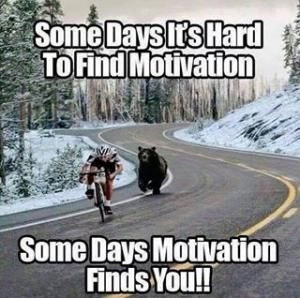“It’s too cold.”
“It’s too hot.”
“I don’t have time.”
“My knee is sore.”
“I’m not motivated…”
Now stop me if you’ve heard this one…actually don’t, because if you have heard this or even said any of the above yourself, you need to read this.
Motivation is not a stand alone concept. Motivation requires a number of attributes to play including, commitment, determination, resilience and work ethic to name a few. So, what happens if you lack some of these attributes? You lose motivation. In order to keep motivating our clients and ourselves we need to break this down. There are people who are exercise addicts that need to train 7 days per week or do something to keep themselves sane. Then, there are others that fall on the other end of the spectrum who would rather go to work than to the gym. So where does effective and long-term motivation lie? Exercise motivation is believed to lie in neither of these realms.
This concept is based on ‘self-determination theory’. This theory divides our motivations into two categories of which you may have heard of or have used yourself, which are intrinsic and extrinsic motivators. Intrinsic goals stem from deep-seeded and often subconscious self-needs that, upon achievement, give you a sense of deep validation. Extrinsic motivation does not focus on the activity itself, but more on how the activity can help you to achieve your goal. From a training perspective, you can get enjoyment and satisfaction out of exercise (intrinsic) but at the end of the day, you want to lose those extra 3kg to look leaner (extrinsic). Given these two categories, which do you think is the more powerful for motivation longevity?
As Trainers we need to inspire intrinsic motivation and teach our clients how to enjoy the process itself rather than see it as an obstacle to get over before reaching their goal. Those who live the active lifestyle have found something within the process that validates them, that energises them and makes them feel alive. Of course, using both methods is applicable when planning to achieve goals and both methods are absolutely fine to use. The consideration is, if you want to truly make a difference in the community, or if you are in the business of health promotion and lifestyle change, focus on developing that intrinsic connection with your clients and help them build the connection between exercise and happiness (for want of a less cliche word) rather than only focusing on the outcome. After all, lifestyle change does not have a finish line.
Until next time,
Sofia
